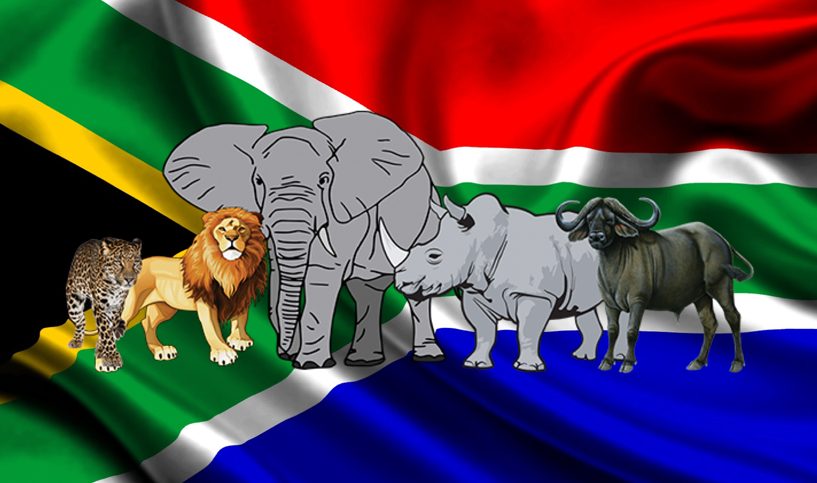Kuwait has a close relationship with South Africa; you can find many South African nationals living and working here, and many residents in Kuwait have traveled across to visit the beautiful country famed for Cape Town, Table Mountain and The Big Five. The latter was first used in the nineteenth century, in reference to the five animals considered the most dangerous to hunt; the lion – Panthera Leo, the elephant – Loxodonta Africana, the leopard – Panthera Pardus, the rhinoceros – Ceratotherium simum or Diceros bicorni, and the Cape buffalo – Syncerus caffer.
Over the last few years, South Africa has seen a trend toward eco-tourism instead of hunting, and the year-round economic stability of the tourist who shoots with the camera and not the rifle. Many beautiful game lodges, parks and reserves were established decades ago. But now, in the upturned COVID-19 world, you can still enjoy Big Five. bazaar explored South Africa online to bring you some of the best live lodge feeds so you can continue to enjoy the iconic South African fauna.

In the local Shangaan vernacular, “djuma” means “roar of the lion,” and the word now is synonymous for the globally recognized safari brand that’s lauded as much for its commitment to people and planet as it is for its exceptional Big Five safari experiences and incredible wildlife sightings. Click on the Live Cam tab on djuma.com to see the most incredibly well produced “WildEarth LIVE safari” – streaming at 7 am and 5 pm Kuwait time, across various locations on the reserve with hosts driving 4x4s through the area spotting and following game for you. The waterhole is particularly calming if you like the sound of flowing water and chirping insects. They’ve got an active Facebook page where they have edited footage of exciting moments captured on film.

The park is located in the ancestral home of the Tembe tribe, who co-manage the park and the lodge. Tembe’s African elephants used to be South Africa’s last remaining free-ranging herd, at one time moving seasonally between Mozambique and Maputaland. In recent years, the dense forests of Tembe have provided elephants refuge from the depredations of border conflicts and landmines, and their continuous harassment by ivory poachers.
On the YouTube channel African – Tembe you can watch Tembe’s wild animals in the beautiful African bush LIVE. Watch elephants, including some of the world’s largest tuskers, Lions, Buffalo, over 340 species of birds and much more streamed live to your living room in real-time. They have also created a large video archive for you to enjoy at your leisure.

This live cam is uniquely shot from the level of a leopard, so you can get a real feel for the size of the numerous creatures that visit the waterhole. Cheetah, lions, elephant, giraffe, impala, baboons, warthog, and owls have all been spotted here recently along with genets, meercats, waterbuck and porcupines.
Sabi Sands Private Game Reserve

This reserve features 50 KM of unfenced boundary with Kruger National Park and has the rivers Sabi and Sand running through it. This adds another dimension to the biodiversity of the area, and this place is also a particular favorite of leopards hence one of the lodge names, “Leopard Hills”. The Nkorho Bush Lodge LIVE cam uses infra-red technology to view the waterhole, even at night.

Groot Marico is located on the northern border of South Africa and Botswana, and it is here that you can find the Tau waterhole which is overlooked by the Tau Game Lodge LIVE cam. The waterhole houses resident Nile crocodiles, and over 27 species of game.

Image from tripadvisor.com
It would be remiss not to mention this park and they certainly don’t disappoint when it comes to footage. The park has two main feeds from the Orpen and Satara LIVE cams. You can also see still images from Orpen and Satara locations. There is a third still cam located at Punda Maria. The Orpen Rest Camp is located on the western border side of Kruger National park. The small camp offers great opportunities to see the elephant, rhino and buffalo. Satara Rest Camp has a unique, man-made waterhole often frequented by giraffes, and this particular camp is also known as being the best to see the lion, cheetah, and leopard. Punda Maria Rest Camp is known for its outstanding birdwatching. Follow them on Twitter.
With the onset of the Coronavirus pandemic, fewer visitors during the lockdown, has seriously affected many of the reserves and parks that rely heavily on tourism to fund conservation efforts and support local communities. Please do go to local websites to donate to these efforts if this is an area you wish to support. Big Five species may be iconic, but they are not invincible and are limited in number.
One of the astounding things that can be witnessed during these times however, is how game is now venturing more closely into areas previously dominated by man that they were wary of before. The hustle and bustle of day to day business has subsided and with it the noise that would warn these animals to stay at a distance. For longer than usual, and out of season, the lions are basking in the warmth of the tarmac roads that stretch through the vast reserves. Recently, a pride in Orpen made international news by relaxing on a Wednesday in the middle of the afternoon across a deserted road in Kruger National Park. The pack was spotted by park ranger Richard Sowry near the Orpen Rest Camp on the western border of the park, which has been empty since South Africa went into lockdown on March 26. “Normally they would be in the bushes because of the traffic but they are very smart and now they are enjoying the freedom of the park without us,” Sowry said.

This phenomenon of animals swiftly reclaiming the streets has been witnessed in cities across the globe. You can watch otters relaxing on the banks of the Sungai Singapora river in Singapore and playing in the previously crowded big and small Merlion tourist spots. But these intrepid adventurers have even been seen in the city proper.
Monkeys in New Delhi have been spotted in normally crowded alleys, there’s even viral footage of one flying a kite. Monkeys are also overrunning the streets in Thailand.
Image from Twitter @susantananda3
It’s not only exotic animals of course that are wandering around in unexpected places. Llandudno, Wales, experienced an influx of mountain goats meandering along the village roads.

As animals take advantage of the limited activity of humans, Forbes reports that nature is also taking a breath. “As more and more countries adopt strict quarantine measures, reducing traffic and closing factories, the global emission of carbon-monoxide and similar pollutants dropped by 53% if compared to the emissions in March 2019.”

Hopefully, as we all are becoming more aware of our own and others’ health and well-being, we will also take stock of the impact human activity has on nature and how we can move forward together to take this into account in the future.
To find more LIVE cam footage from all over Africa, go to africam.com, and check out their video highlights here. South African National parks LIVE cam footage can be found on sanparks.org.








